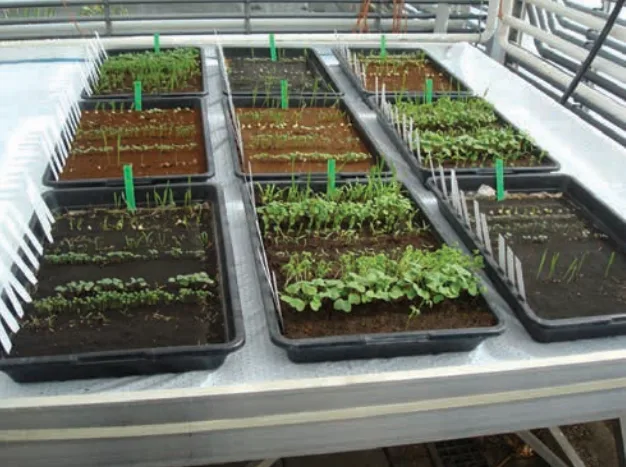
One small step for crops on Mars (but no giant leap for spinach)
Two of our closest celestial neighbours -- the Moon and Mars -- are both potential targets when it comes to establishing a permanent off-world presence for humans. While there are significant challenges to overcome before those kinds of bases are possible, the seeds have already been planted.
In this case, quite literally.
In a recently published study, Dutch researchers showcased their success in growing crops in Martian and lunar soils.
The team used simulated soils developed by NASA, designed to mimic the top layer of the lunar and Martian surfaces -- the regolith, a mix of dust, dirt, and other debris. Though we do have some authentic Moon rock here on Earth, there isn't enough to conduct tests like these. Fortunately, based on what we've learned about its composition (and what we know about the composition of Mars's surface), it's not too hard to find very close matches here on Earth. These mock soil samples were mixed with Earth-bound organic matter to make the interplanetary potting mix. Control trays using regular Earth soil were also used to see how the plants performed under the experiment's conditions.
Garden cress, rocket (arugula), tomato, radish, rye, quinoa, spinach, chives, peas, and leek were the crops selected for the test. Researchers picked most of these species because they have different edible parts, but the flavour was a consideration, too. "Leek, radish, rocket and chives were also selected because of their spicy taste," said the team. "Astronauts on the ISS often complain about the taste of their food and spicy crops may, therefore, be a welcome addition to their diet."

Experiment overview on April 16, 2015, seven days after sowing. Image courtesy De Gruyter/Open Agriculture.
BAD NEWS FOR POPEYE?
While nine of the ten grew well, in some cases well enough to produce seeds, there was one crop that proved difficult. Spinach not only failed to grow properly in the lunar or Martian soils, it didn't perform well in the Earth soil, either, according to the researchers.
Though that might limit the salad selection, the experiment still yielded plenty of greens. The team also believes this is the first time fruits have been harvested from plants in this kind of soil experiment. That makes it a major milestone when it comes to showing that off-planet agriculture could be self-sufficient.
"We were thrilled when we saw the first tomatoes ever grown on Mars soil simulant turning red," said one of the study's authors, Wieger Wamelink. "It meant that the next step towards a sustainable closed agricultural ecosystem had been taken."
Sources: De Gruyter | Iflscience | Science Alert |









